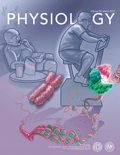
PHYSIOLOGY
Scope & Guideline
Leading the Charge in Physiological Innovation
Introduction
Aims and Scopes
- Cardiovascular Physiology:
Research in this area explores the mechanisms underlying cardiovascular function, including blood pressure regulation, vascular reactivity, and the effects of various treatments on heart health. - Neurophysiology:
This scope encompasses studies on neuronal signaling, brain function, and the interactions between the nervous system and other physiological systems, particularly in relation to stress and metabolic control. - Endocrine Physiology:
Investigations into hormone signaling pathways and their impact on metabolism, growth, and homeostasis, with a focus on gender differences and hormonal regulation of physiological responses. - Metabolic Physiology:
Research focusing on metabolic processes, including energy expenditure, nutrient metabolism, and the effects of dietary components on health outcomes. - Renal Physiology:
Studies addressing kidney function, mechanisms of renal injury, and the role of the kidney in systemic physiology and disease. - Exercise Physiology:
Exploration of the physiological adaptations to physical activity, including the effects of exercise on cardiovascular health, muscle function, and metabolic regulation. - Pathophysiology:
Research that connects physiological mechanisms to disease states, exploring the underlying factors that contribute to conditions such as obesity, diabetes, and cardiovascular diseases. - Microbiome and Gut Physiology:
Investigations into the interactions between gut microbiota and host physiology, focusing on the implications for metabolic health, immunity, and gastrointestinal function.
Trending and Emerging
- Impact of Environmental Stressors:
There is an increasing focus on how environmental factors, such as air pollution and climate change, impact physiological responses and contribute to health disparities. - Integrative Physiology:
Research that combines multiple physiological systems to understand complex interactions is on the rise, emphasizing holistic approaches to health and disease. - Microbiome Research:
The role of the gut microbiome in influencing metabolic health and disease progression is gaining prominence, with studies exploring the gut-brain axis and its implications for cardiovascular and metabolic disorders. - Technological Advancements in Physiology:
Studies utilizing advanced imaging techniques, wearable technology, and AI-driven analysis tools are emerging, reflecting a trend towards innovative methodologies in physiological research. - Translational Research:
There is a marked increase in studies aimed at translating basic physiological research into clinical applications, particularly in the fields of cardiovascular health, metabolic syndrome, and neurodegeneration. - Sex Differences in Physiology:
Research aimed at understanding the physiological differences between sexes is gaining attention, particularly in the context of disease susceptibility and treatment efficacy. - Neurovascular Interactions:
The exploration of interactions between the nervous system and vascular function is trending, particularly related to stress responses and neurodegenerative diseases.
Declining or Waning
- Traditional Pharmacology:
Research centered on conventional pharmacological interventions is declining, possibly due to a growing emphasis on personalized medicine and alternative therapeutic strategies. - Basic Cellular Mechanisms:
Studies focused solely on basic cellular mechanisms without translational implications are less frequent, as the journal increasingly prioritizes studies that link cellular biology to whole-organism physiology. - Animal Models of Disease:
While animal studies are still important, there is a noticeable shift towards more human-centric research, with less emphasis on rodent models in specific disease contexts. - Invasive Procedures in Human Physiology Research:
Invasive studies in human participants are becoming less common as non-invasive technologies and methodologies gain traction, reflecting ethical considerations and advancements in imaging techniques.
Similar Journals
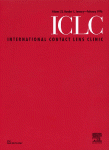
AMERICAN JOURNAL OF PHYSIOLOGY-ENDOCRINOLOGY AND METABOLISM
Transforming understanding in endocrinology and metabolism.American Journal of Physiology-Endocrinology and Metabolism, published by the American Physiological Society, stands as a leading platform for disseminating high-quality research in the fields of endocrinology, diabetes, and metabolism, as well as general physiology. With an impressive impact factor placing it within the Q1 category across multiple relevant disciplines (Endocrinology, Diabetes and Metabolism; Physiology; and Medical Physiology), this journal reflects its authoritative position in the scientific community. Spanning from 1980 to 2024, the journal consistently publishes groundbreaking studies and significant findings that advance our understanding of hormonal regulation and metabolic processes. Although it does not currently offer open access, it provides valuable resources for researchers, professionals, and students alike, eager to stay at the forefront of advancements in physiological sciences. Addressed in Rockville, Maryland, its commitment to excellence and rigorous peer review ensures that every article contributes essential insights to the field.

COMPARATIVE BIOCHEMISTRY AND PHYSIOLOGY A-MOLECULAR & INTEGRATIVE PHYSIOLOGY
Shaping the Future of Biochemical and Physiological Discovery.Comparative Biochemistry and Physiology A-Molecular & Integrative Physiology, published by Elsevier Science Inc, serves as a pivotal platform for cutting-edge research in the fields of biochemistry, physiology, and animal sciences. The journal, holding an esteemed presence with an ISSN of 1095-6433 and E-ISSN 1531-4332, spans a remarkable history of contributions since its inception in 1960, showcasing significant findings up to 2024. As a Q1 quartile journal in Animal Science and Zoology and featuring competitive rankings across various biochemistry and physiology disciplines, it stands out as a leading resource for both established researchers and emerging scholars alike. The journal is committed to publishing high-quality, peer-reviewed articles that deepen our understanding of molecular and integrative physiology, playing an essential role in advancing scientific knowledge and fostering interdisciplinary collaboration. With access options that prioritize the dissemination of impactful research, Comparative Biochemistry and Physiology continues to shape the dialogue within these dynamic fields.
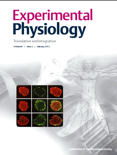
EXPERIMENTAL PHYSIOLOGY
Elevating academic discourse in health sciences.EXPERIMENTAL PHYSIOLOGY, published by WILEY, stands as a vital resource in the fields of Nutrition and Dietetics and Physiology, providing high-quality, peer-reviewed research since its inception in 1990. With an impressive categorization into the Q2 quartile in these domains, the journal emphasizes the integration of experimental and clinical findings, making significant contributions to our understanding of physiological processes and nutritional impacts on health. The journal operates within a competitive landscape, ranked significantly in Scopus, showcasing its relevance to both the medical community and nutritional sciences, as evidenced by its rankings in Nursing, Medicine, and Biochemistry. Though it is not currently open access, the journal remains an indispensable tool for researchers, professionals, and students seeking to deepen their knowledge and stay updated on cutting-edge research. With a publication window extending to 2024, EXPERIMENTAL PHYSIOLOGY continues to influence the academic discourse and promote advancements in its respective fields.

JOURNAL OF INSECT PHYSIOLOGY
Pioneering Research in Insect PhysiologyThe Journal of Insect Physiology, an esteemed publication by Pergamon-Elsevier Science Ltd, stands at the forefront of the study of insect biology and physiology. Established in 1957 and set in the United Kingdom, this journal has consistently contributed to advancing our understanding of the intricate physiological processes of insects throughout its converged years ending in 2024. With an impressive impact factor that solidifies its reputation, it ranks in the 1st quartile for Insect Science and the 2nd quartile for Physiology as per the 2023 metrics. The journal's Scopus rankings also reflect its influence, boasting a notable position in both Agricultural and Biological Sciences and Biochemistry, Genetics, and Molecular Biology. Although currently not open access, it provides researchers and professionals with invaluable insights and groundbreaking research essential for the field. With its comprehensive scope, the Journal of Insect Physiology is dedicated to fostering scientific dialogue and innovation, making it an indispensable resource for scholars and students alike.

Current Research in Physiology
Bridging Theory and Practice in Physiological StudiesCurrent Research in Physiology is an esteemed academic journal published by Elsevier, aimed at advancing the field of physiology through high-quality research contributions. Since its inception in 2019, the journal has provided a platform for innovative studies and reviews, addressing both fundamental and applied aspects of physiology across various biological systems. With its ISSN 2665-9441, it operates under a non-open access model, ensuring rigorous peer review while also fostering a broad readership. The journal has been classified in the Q3 category for both Physiology and Medical Physiology as of 2023, reflecting its growing influence and relevance, as evidenced by its Scopus rankings within the respective fields. Designed for researchers, clinicians, and students alike, Current Research in Physiology is committed to disseminating cutting-edge research that informs both academic inquiry and clinical practice, paving the way for future advancements in physiological science.

JOURNAL OF PHYSIOLOGY AND BIOCHEMISTRY
Fostering Collaborative Discoveries in Biomedical ResearchJOURNAL OF PHYSIOLOGY AND BIOCHEMISTRY, published by Springer in the Netherlands, serves as a pivotal platform for disseminating high-quality research within the fields of physiology, biochemistry, and related biomedical sciences. With an impressive impact factor reflected in its categorization as Q2 in Biochemistry and Q1 in Medicine (miscellaneous), this journal fosters a vibrant community of scholars dedicated to advancing knowledge and innovation. The journal’s broad scope encompasses a wide range of topics from cellular mechanisms to systemic physiology, making it relevant for both theoretical and applied sciences. Researchers and practitioners are encouraged to utilize the available Open Access options to reach a wider audience. The journal’s continuous contribution to the scientific dialogue since its inception in 1996 positions it as a key resource for professionals and students alike, facilitating the exploration of cutting-edge topics and collaborative research opportunities.

AMERICAN JOURNAL OF PHYSIOLOGY-HEART AND CIRCULATORY PHYSIOLOGY
Unveiling the complexities of heart physiology.AMERICAN JOURNAL OF PHYSIOLOGY-HEART AND CIRCULATORY PHYSIOLOGY, published by the American Physiological Society, is a premier journal dedicated to advancing the understanding of cardiovascular physiology. With an ISSN of 0363-6135 and an E-ISSN of 1522-1539, this esteemed journal has been a vital resource since its inception in 1977, and continues to publish cutting-edge research that shapes the fields of cardiology and physiology. Recognized as a Q1 journal in multiple categories, it ranks impressively within the top tier of its fields, including a notable 18th percentile rank in Physiology (medical). The journal’s impact factor and extensive reach in the academic community affirm its significance in promoting innovative studies and insights. While it does not offer open access options, the journal remains accessible through institutional subscriptions, making it an essential tool for researchers, professionals, and students alike, who are keen to stay abreast of the latest developments in heart and circulatory physiology. For further information, the journal is based in the United States at 6120 Executive Blvd, Suite 600, Rockville, MD 20852. As a cornerstone of cardiovascular research, it invites contributions that push the boundaries of knowledge and enhance clinical practice.

CHINESE JOURNAL OF PHYSIOLOGY
Connecting researchers to groundbreaking physiological studies.CHINESE JOURNAL OF PHYSIOLOGY, published by WOLTERS KLUWER MEDKNOW PUBLICATIONS, has been a vital resource since its inception in 1971, catering to the expansive field of physiology. Operating out of Taiwan, this journal addresses critical research in both general and medical physiology, providing a platform for innovative studies that contribute significantly to the understanding of biological processes. With an emphasis on disseminating high-quality, peer-reviewed articles, it holds a Q4 ranking in Physiology and a Q3 ranking in Medical Physiology as of 2023, reflecting its commitment to advancing physiological science. The ISSN for this journal is 0304-4920 and the E-ISSN is 2666-0059. While access options are not available as open access, researchers and professionals can still benefit from its valuable insights. Notably, it ranks #78/113 in Medicine - Physiology and #159/193 in Biochemistry, Genetics, and Molecular Biology - Physiology on Scopus, indicating its growing influence in the scientific community. We invite researchers, professionals, and students alike to explore the wealth of knowledge featured within the pages of the CHINESE JOURNAL OF PHYSIOLOGY.
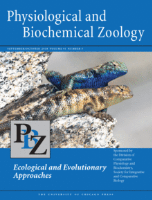
PHYSIOLOGICAL AND BIOCHEMICAL ZOOLOGY
Fostering Innovation in Animal Science ResearchPhysiological and Biochemical Zoology is a distinguished peer-reviewed journal published by University of Chicago Press, focusing on the interrelated fields of animal physiology, biochemistry, and zoology. With a strong commitment to advancing scientific understanding, this journal serves as a vital resource for researchers, professionals, and students alike, providing a platform for the latest findings and advancements in the field. Ranking in the top quartile (Q1) in Animal Science and Zoology as of 2023, and showcasing a substantial convergence of historical data from 1999 to 2023, its impact in the academic community is underscored by its engagement with high-quality research. While it also appears in the third quartile for Biochemistry and Physiology, the journal successfully integrates these disciplines, reflecting the complexity of biological systems. Available for reading via various access options, this journal is essential for anyone seeking to deepen their knowledge or contribute to the field of Zoological sciences.
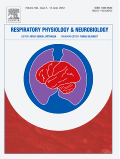
RESPIRATORY PHYSIOLOGY & NEUROBIOLOGY
Unveiling the Interplay Between Lungs and NeuroscienceRESPIRATORY PHYSIOLOGY & NEUROBIOLOGY, published by Elsevier, is a prominent journal in the fields of respiratory medicine, neurobiology, and physiology. With an ISSN of 1569-9048 and E-ISSN 1878-1519, this journal serves as an essential platform for disseminating high-quality original research and reviews that explore the intricate relationships between respiratory function and neural controls. Located in the Netherlands, it boasts an impressive standing within its field, categorically placed in the Q3 quartile for Neuroscience and Physiology and Q2 for Pulmonary and Respiratory Medicine according to the 2023 metrics. With a Scopus rank of #58 in Pulmonary and Respiratory Medicine and a robust impact factor indicative of its academic influence, the journal aims to foster advancement in understanding the physiological and neurobiological aspects of respiration. Although the journal is not open access, its content is vital for researchers, professionals, and students eager to contribute to the expanding knowledge base in these critical scientific domains.